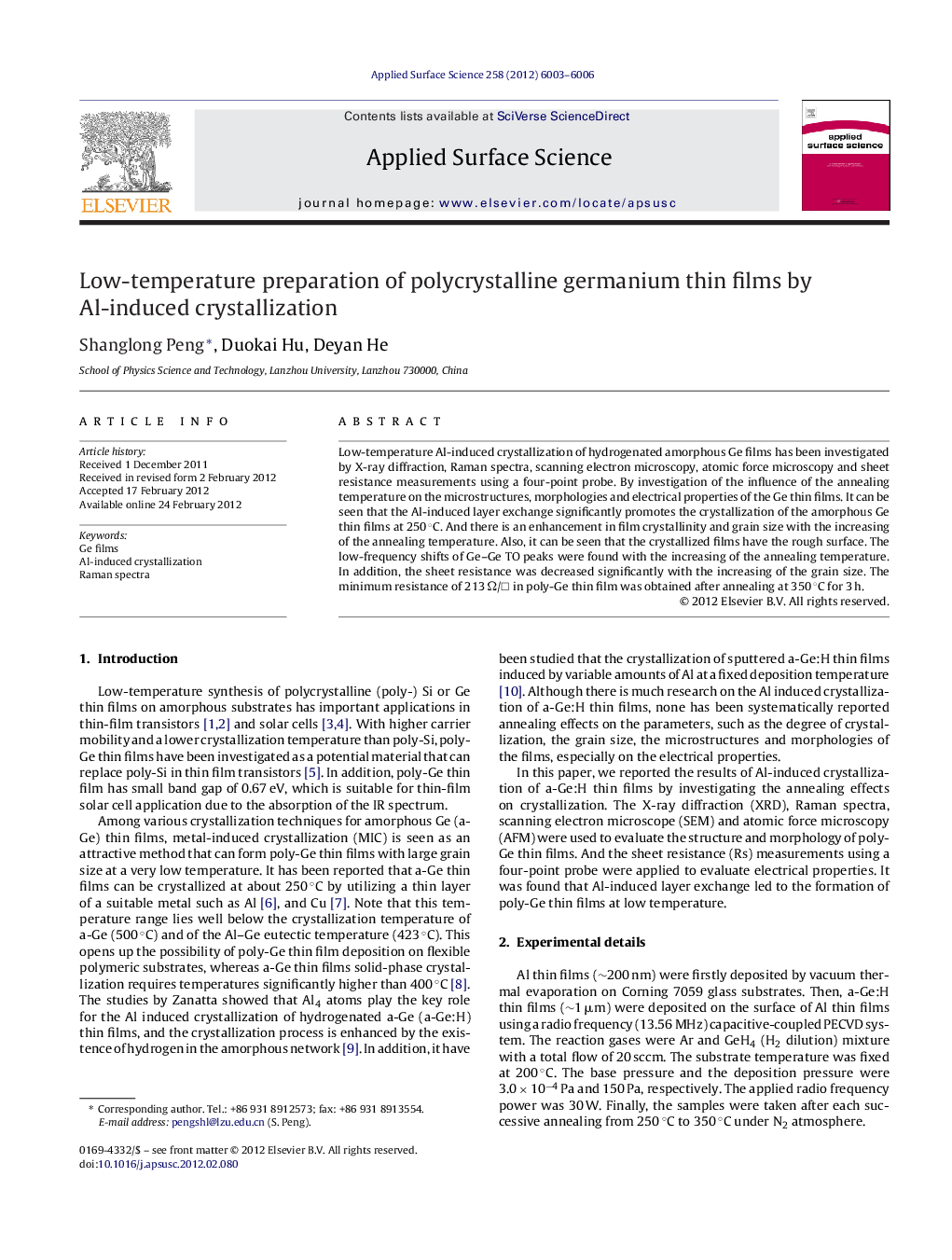| Article ID | Journal | Published Year | Pages | File Type |
|---|---|---|---|---|
| 5365227 | Applied Surface Science | 2012 | 4 Pages |
Low-temperature Al-induced crystallization of hydrogenated amorphous Ge films has been investigated by X-ray diffraction, Raman spectra, scanning electron microscopy, atomic force microscopy and sheet resistance measurements using a four-point probe. By investigation of the influence of the annealing temperature on the microstructures, morphologies and electrical properties of the Ge thin films. It can be seen that the Al-induced layer exchange significantly promotes the crystallization of the amorphous Ge thin films at 250 °C. And there is an enhancement in film crystallinity and grain size with the increasing of the annealing temperature. Also, it can be seen that the crystallized films have the rough surface. The low-frequency shifts of Ge-Ge TO peaks were found with the increasing of the annealing temperature. In addition, the sheet resistance was decreased significantly with the increasing of the grain size. The minimum resistance of 213 Ω/⡠in poly-Ge thin film was obtained after annealing at 350 °C for 3 h.
⺠The Al-induced layer exchange significantly promotes the crystallization of the a-Ge:H thin films at 250 °C. ⺠The AFM images present a random and uniform distribution of Ge nanocones for annealed samples, which is caused by the introduction of the Al layer. ⺠The Ge-Ge phonon modes shift to lower frequency and the FWHM of the Ge Raman peaks decreases with increasing the annealing temperature. ⺠The sheet resistance decreases with increasing the annealing temperature, which is due to a reduction in the amount of dangling bonds and defects in the crystallized Ge films.
